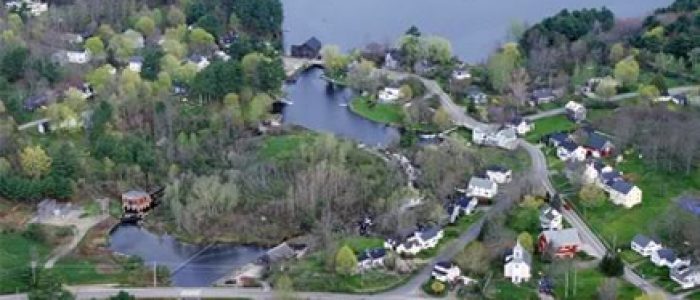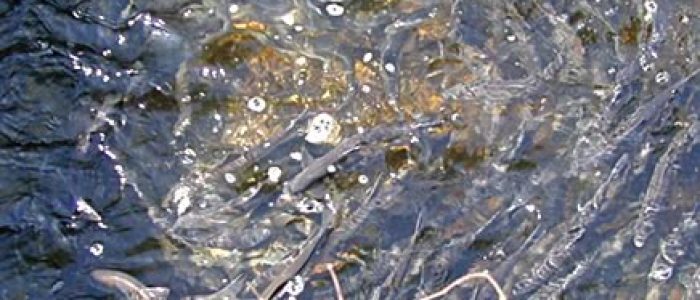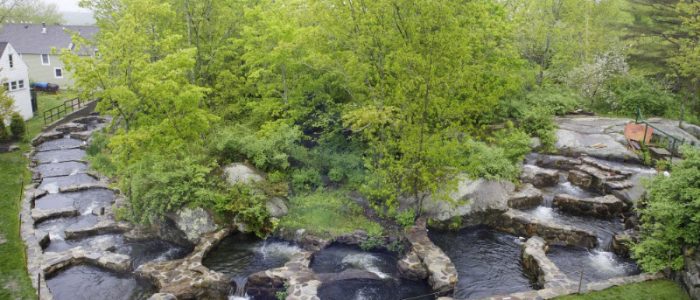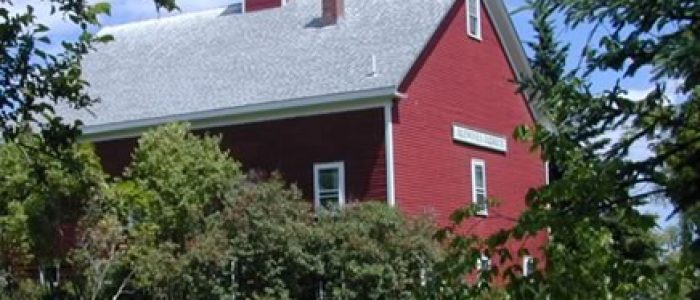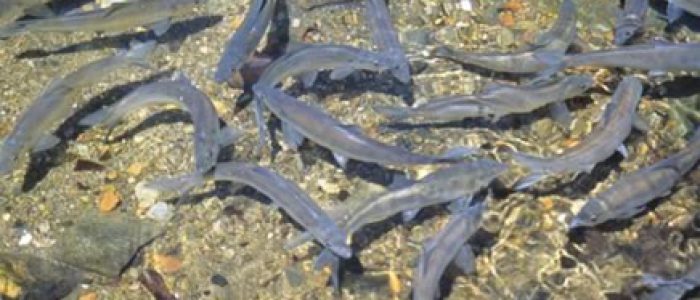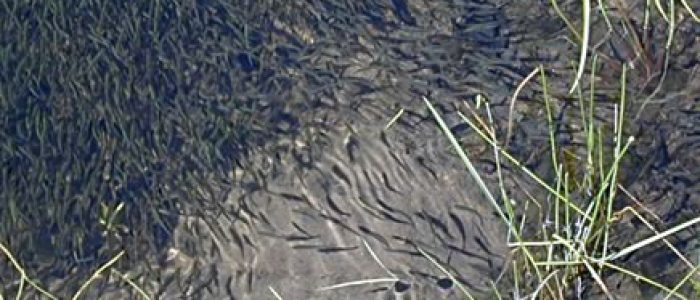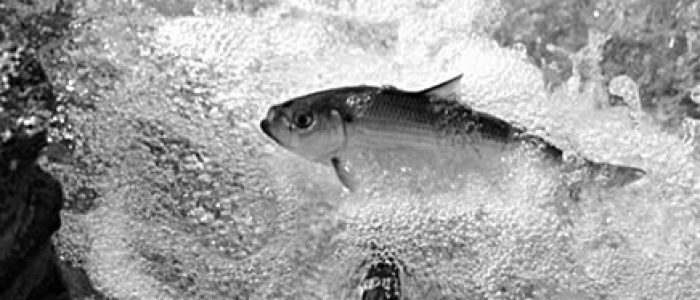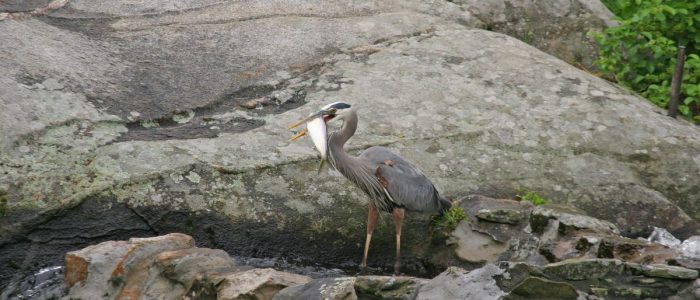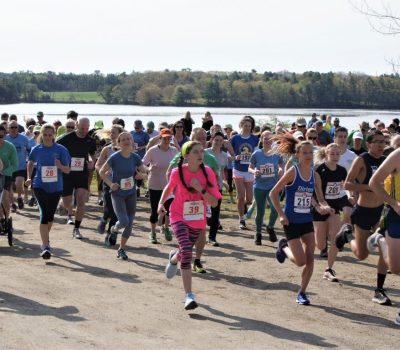Welcome to historic Damariscotta Mills, Maine – home to one of Maine’s oldest and most productive alewife fisheries. The stone fish ladder that is the centerpiece of Damariscotta Mills was constructed in 1807 by the Towns of Nobleboro and Newcastle because, for nearly a century, mills blocked access for fish to the freshwater falls. In 2007, after two centuries of use, the fish ladder was in poor condition so a restoration project was initiated by a strong community group working with the Towns of Nobleboro and Newcastle and the Nobleboro Historical Society.
Upper pool from the alewives’ point of view. May, 2020
Fish Happenings
The alewives are coming
Yesterday I saw the first alewife of the season–flying overhead in the talons of an osprey! The big schools of alewives will follow but it appears that the “scouts” are already in the bay. Spring is surely underway! Stay tuned right here for updates!
Spring Events at the Fish Ladder
The storms this spring put the festival area and fish house under 3 – 4 feet of water several times, and we don’t believe the footing is safe for a large public event, so we will not be holding a festival this year. We will still be celebrating the alewives’ return though, with a Memorial […]
The First Fish
The first few alewives were spotted in the lower fish ladder yesterday morning! We call these fish “the scouts”, fish that come in early even though the water is still quite cool. There are also alewives in Great Salt Bay–osprey are circling and diving with some success. As long as we have sunny warming days, […]
Buy a ticket for the Raffle Quilt!
Take a look at the 2024 Fish Ladder Restoration Raffle Quilt which is on display at Skidompha Library and buy a ticket for the raffle!
Run with the Alewives!
What better way to celebrate the running alewives than with a 5K run? Please join us for a healthy community run that includes cash prizes, professional timing and a gorgeous course along the Great Salt Bay! Date and time TBD. Stay tuned.
An Unexpected Visitor
Samuel Tan’s video captures an unexpected and uninvited visitor to last year’s alewives run. Click on the heading to view …
2022 Fish Count
2022 was another banner year for alewives at Damariscotta Mills! The count of fish going into the lake to spawn was 1,103,346. Hooray! Another year with a count over 1 million….our fish ladder is really working well!

